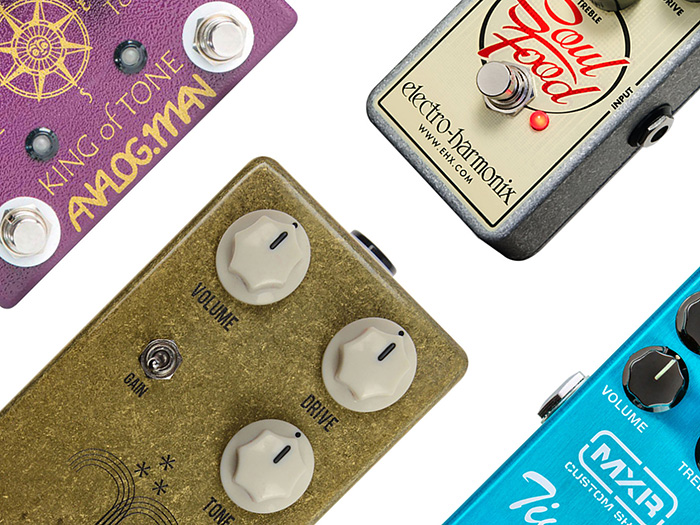Whether you’re playing rock, blues, or metal, stacking overdrive pedals is an easy way to amp up your dirty tones. Stacking pedals creates a dynamic, harmonically rich sound that you can tweak in so many ways — and by using different pedals in your stacks, you can create practically limitless sounds.
However, before you start stacking pedals it’s important to know how to control your pedals for a focused drive tone. Pay attention to these tips to get the best results from your stacked overdrive pedals.
What is Stacking?
In the guitar world, “stacking” refers to placing two similar pedals back-to-back on your pedalboard. It’s most commonly used with drive pedals and delay pedals, which produce stronger, unique sounds when fed into each other. You’ll find players stacking pedals in almost every genre, but rock, punk, metal, and alternative musicians in particular enjoy stacking.
Stacking is an easy way to discover new sounds without purchasing additional pedals. It also gives you more control over your drive sound, as you have two EQ sections you can adjust to change your tone.
Gain Levels
The first thing you’ll need to pay attention to are the gain levels in your different overdrive pedals. Placing multiple drive pedals together will add a lot more gain to your final tone, so it’s important not to overdo it when picking the pedals you want to stack.
Lower-gain overdrives also offer a bit more versatility, so you can go from “clean boost” sounds to light breakup and classic rock crunch. With pedals stacked together, you can turn those light gain tones into harder, more aggressive sounds for rock and punk.
If you want more gain, you might want to consider stacking multiple distortion or fuzz pedals instead. You can adjust those pedals to offer more gain for blasted-out distortion or grinding “velcro” fuzz tones.
Transparent vs. Colored
It’s also important to know whether your overdrive pedals are transparent or colored. The final drive pedal in your stack will determine most of the sound of your drive. If you want a sound like your amp, think about a transparent drive. Otherwise, a colored overdrive will impose its own unique EQ signature.
Try tweaking the EQ on each pedal that you stack to see how it affects the final sound. You can also add more volume to the first pedal in the chain. This won’t increase the overall volume of your rig, but it will make your signal hit the second pedal harder. This translates into more gain at the end and carries through some of the color of the first overdrive into the second.
Signal Chain Placement
Finally, take a look at your signal chain and evaluate where to put your drive pedals. Most players use them at the front of their pedalboard so they don’t get delay, reverb, and other effects creating wash in their drive sound.
You might also want to put an EQ pedal after your stack of overdrives. This strategy gives you a quick way to boost any frequencies you might want to accent, or cut a certain frequency that’s drowning out others. When you’re on stage or in the studio, it’s the perfect tool to correct any unexpected issues.
Conclusion
If you’re looking for dynamic overdrive tones with gritty saturation, stacking overdrive pedals is the way to go. Remember the tips we’ve explained here, and you’ll discover an extremely useful technique that’s versatile enough for all genres.

